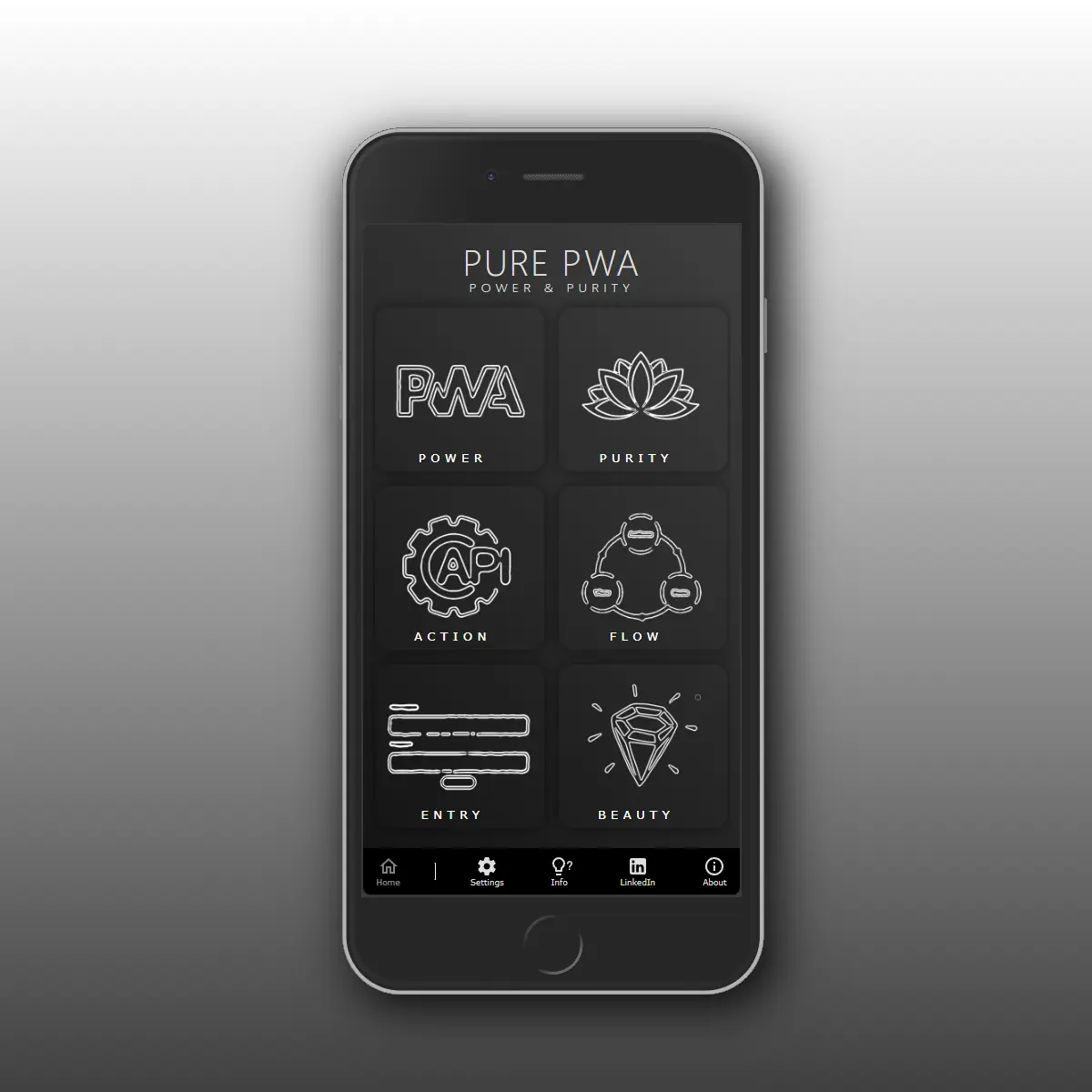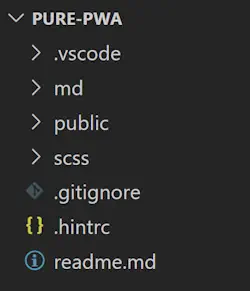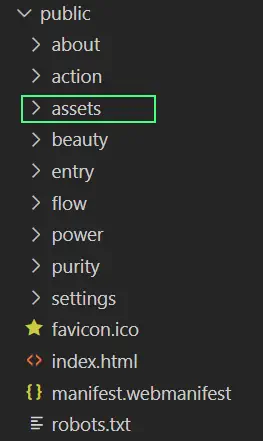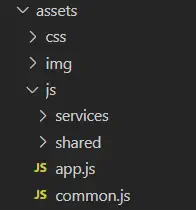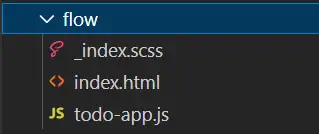PurePWA is a Radical Experiment in Simplifying Boilerplate for PWAs, in which we force ourselves to only use the Modern Web standards, and nothing else.
There is no setup.
💡 This is a vanilla, accessible, SEO-friendly, ultra-lean, no-build, no dependencies PWA project, using only what's included in the Web Standards and has been implemented by Modern Browsers.
The two most important technologies used are:
- Web Components
- ES Modules (loaded and linked ar runtime)
I have developed the code using these tools:
- Microsoft VSCode
- VSCode extensions:
- ritwickdey.LiveServer (Easy to use built-in web server)
- glenn2223.live-sass (Live SCSS compilation)
- PWABuilder.pwa-studio (optional - Loads of PWA goodies)
- VSCode extensions:
Using the tools mentioned above, the PWA is directly served using LiveServer, and CSS is compiled from .scss files by live-sass.
Nothing else is needed.
This is a hybrid MPA, which means that we have multiple app pages, each one in its own folder.
This provides a number of undeniable benefits:
- No need for SPA routing 🤯
- Code readability and maintenance
- Smaller, optimized downloads,
Although base routing is handled by the web server, each route can still setup sub-routes and handle them, through a web standards-based routing mechanism (Navigator.navigate).
The public/ folder is the one getting served as root (see .vscode/settings.json).
Within public/, there's one system folder (assets/), and a folder for each MPA page.
The assets/ folder holds shared images, css (compiled from /scss/app.scss and its @import-ed .scss files).
The assets/js/ folder holds:
Service Worker and related
Web Components (each in a seperate folder)
Main entry point
<script defer type="module" src="assets/js/app.js"></script>Shared, exported symbols used elsewhere.
import { CustomElement } from "../assets/js/common.js";Each MPA Page folder can consist of HTML, SCSS and JS files (and other files that are related to the page).
The SCSS files are imported into the index.scss file in the public root, and are compiled automatically by the Live Sass Compiler, into `public/assets/css/app.css.
The '_' in
_index.scssmeans the stylesheet is going to be imported (@import) to a main stylesheet i.e. styles.scss.
This is a choice I made, to have just one CSS file served. Suit yourself if you would like to implement a different approach.
If there is a .js file in an app folder (such as in the example), the index.html file will include it, like this:
<script defer type="module" src="todo-app.js"></script>The main advantage of this approach is that MPA pages are isolated modules, with page-specific behavior just declared for that page.
This means improvement maintenance, readability, separation of concerns, and deployability.
Having separate app pages, in an MPA app, doesn't mean that there's no shared code.
We rely on the standards-based, ECMAScript runtime import mechanism, that is similar to the way imports are done in bundling/building environments (webpack, vite, esbuild, etc.), but uses the .js extension:
import { CustomElement } from "../../common.js";PurePWA uses two kinds of Web Componenents:
These components insert their own content into the Shadow DOM below their container element. Styling is then isolated and should be done using adopted stylesheets.
These components enhance existing, contained HTML structures, using the Light DOM, the content nested within the Web Component's tags. Styling doesn't differ from standard styling in the rest of the document.
This is a generic Web Component class that offers a few benefits over the HTMLElement base class:
render() {
const builder = new HTMLBuilder(/*html*/ `<ol>{html}</ol>`);
for (let item of this.listViewItems) {
builder.add(this.getItem(item));
}
return builder.toHTML();
}Inherits from CustomElement. Provides simple 'SPA'-like routing, but within the MPA page.
Instead of the render() method of the CustomElement class, you use the routes property to implement your rendering logic:
Example:
get routes() {
return {
"/movies/": this.getPopularMovies.bind(this),
"/movie/": this.getMovie.bind(this)
};
}
async getPopularMovies() {
hookEscapeKey(() => history.back());
const movies = await this.tmdb.getPopularMovies();
return /*html*/ `<section class="cards" >${this.getCards(
movies.results
)}</section>`;
}One of the goals of the PurePWA experiment is getting a near-native experience. But to get that, we first need to get a grasp of what that actually means.
- Glossy appearance (scalable vector graphics, gradients, shadows)
- Download/launch/interaction speed
- Optimal device real estate usage
- Responsive, mobile-first design
- Offline capability
- No HTML reflows during app usage
- Micro-animations: subtle effects to give immediate feedback, more user satisfaction and engagemen, create fluid state transitions, and even prevent errors (because of immediate feedback).
- No browser chrome (PWAs run in the browser, but you want to hide all browser UI)
This project tries to address all of these areas.
For PurePWA, I've chosen the very much undervalued SVG Sprites technique for icons and other graphics.
Check out this free store for more icons.
<svg xmlns="http://www.w3.org/2000/svg">
<defs>
<symbol id="menu"
xmlns="http://www.w3.org/2000/svg">
<path d="M3,6H21V8H3V6M3,11H21V13H3V11M3,16H21V18H3V16Z" />
</symbol>
<symbol id="blog"
xmlns="http://www.w3.org/2000/svg">
<path d="M4,5H20V7H4V5M4,9H20V11H4V9M4,13H20V15H4V13M4,17H14V19H4V17Z" />
</symbol>
</defs>
<!-- more -->
</svg>The svg-icon Web Component is used to include graphics within the HTML structure.
<a href="/" aria-label="Home">
<svg-icon icon="home" color></svg-icon>
<span>Home</span>
</a>The svg-icon component sits in the /public/assets/js/shared folder.
import { CustomElement } from "../../common.js";
customElements.define(
"svg-icon",
/**
* Renders SVG icon using SVG sprites defined in /assets/img/icons.svg
*/
class SVGIcon extends CustomElement {
static get observedAttributes() {
return ["icon"];
}
attributeChangedCallback(name, oldValue, newValue) {
if (name === "icon" && newValue) {
this.querySelector("use")?.setAttribute(
"href",
"/assets/img/icons.svg#" + newValue
);
}
}
render() {
return /*html*/ `<svg class="icon" xmlns="http://www.w3.org/2000/svg">
<use id="use" href="/assets/img/icons.svg#${this.getAttribute(
"icon"
)}" />
</svg>`;
}
}
);- Auto adapting app menu (hamburger, bottom menu on mobile)
- CSS grid auto flow
- SVG sprite icons
- Micro animations (and consideration of user preferences)
- Light & Dark modes (defaults to system settings)
- Automatic caching of MPA pages (to minimize delays/page loads)
- Skeleton Empty States
On each of the demo pages, there's a lot of stuff going on, but all of it is done with pure HTML, CSS and JS, and without any dependencies.
Here are some highlights:
- Peer-to-peer video calls using WebRTC API
- Web Share API
- Accordion using details/summary semantic HTML tags
- Progressive enhancement (accordion-details Web Component)
- Use of
fetch()API - In-page router using
Navigator.navigateinterception - View Transition API: morphing between master & detail
- Custom Skeleton Empty State
- Semantically correct, accessible web form
- Enclosing label inputs to avoid unique ids and 'for' attributes
- x-form progressive enhancement Web Component
- Great accessibility
- Semantic HTML (fieldset, legend, label, aria-attributes)
- Progressive enhancement dropdown-list (using input + dynamic datalist)
- CSS-based required field indication
- Powerful HTML5 Form Validation API
- Scrollbar Snap Behavior (scroll-snap-*)
- View Transitions
- SPA sub-routes
Did you notice?
- No npm_modules/
- No package.json
- No build time
/public/assets/js/app.js contains a few lines that add the demo pages and some other demo-related stuff to the project:
import { mergeDeep, PurePWA } from "./common.js";
import { APP_SETTINGS } from "./app-settings.js";
import { DEMO_SETTINGS } from "./demo-settings.js";
/**
* TO REMOVE THE DEMO, CHANGE THE NEXT 2 LINES INTO THIS:
* let appSettings = APP_SETTINGS;
*/
const appSettings = {}; // APP_SETTINGS
mergeDeep(appSettings, APP_SETTINGS, DEMO_SETTINGS);
window.purePWA = new PurePWA(appSettings); // Launch main PWA controlling component
if (typeof navigator.serviceWorker !== "undefined")
navigator.serviceWorker.register("/assets/js/services/sw.js");Creating pure boilerplate thus comes down to changing the code:
import { mergeDeep, PurePWA } from "./common.js";
import { APP_SETTINGS } from "./app-settings.js";
window.purePWA = new PurePWA(APP_SETTINGS); // Launch main PWA controlling component
if (typeof navigator.serviceWorker !== "undefined")
navigator.serviceWorker.register("/assets/js/services/sw.js");Of course, you'll then remove the about, purity, flow, entry, action and power folders and adapt the routes property in /public/assets/js.app-settings.
If you want to follow further developments of the PurePWA project, follow this repo, and these other sources:
Follow the #purepwa hashtag.
